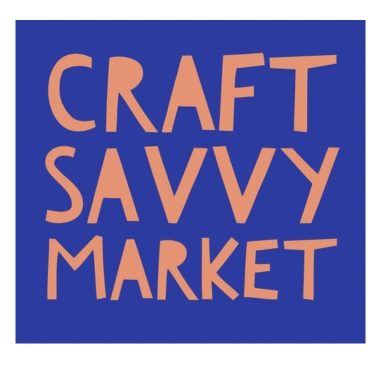We held our third Craft Savvy Market on April 13,2019 and this market superceded our expectations in so many ways. Everything from our spectacular vendors, to our customers, volunteers made the event one of our best. Below, we share our lessons learned.
Lessons Learned – Craft Savvy Market #3
I think we’ve done a nice job of learning from past mistakes and adjusting accordingly. I remember we decided to do a big, beautiful Insta-worthy photo wall at our second event. We did our Pinterest research, brainstormed how to execute our concept and bought our supplies. Then we made a plan to arrive at the building to install the photo wall, step up all the tables and have the vendors arrive 30 minutes later. Let’s just say that schedule didn’t work so well.
The photo wall was tough to set-up and when vendors (and volunteers) began to arrive with lots of questions and needs, stress and scrambling ensued. Note to self: don’t schedule set-up within 30 minutes of vendor arrival!! For the third market, we gave ourselves an ample 90 minutes to set-up and then opened the doors for our vendors. We had calmly set up tables, built the photo wall, briefed our volunteers and could now take care of our vendors. You can’t anticipate everything that will go wrong when you are running a business, but you can certainly learn from mistakes and come back stronger and better prepared.

Another lesson learned with this market is the importance of not hanging your hat on one approach. We typically invest in Facebook ads (along with other things) to get the word out about the event. After focusing mostly on promoting the event page, we tried adding individual post promotion to the mix and received an even better payback on our ad dollars. It was a great reminder to remain nimble and not just rest on what’s working “okay”. Sometimes you need to experiment and make adjustments to get the best possible result.
I can’t believe we just wrapped our third market! I am so proud that we’ve accomplished and grateful for all the lessons learned and support and blessings we’ve received on the journey. Here’s to getting better and not giving up!
By: Charlene Dunbar
More Room- Lesson From CSM #3

When I walked away from the April market, two words haunted me – “more room”. We used half of the space at Decatur Recreation Center for our first and second markets. The April market was the first time we collapsed the wall and used the entire room. The reality is that even when we were using half the space at the previous markets, we were already in the full room. It was up to us to see it. If we had given up after the first and second markets, we would not have made it to the full room. This market reminded me to craft my vision as a maker and to continuously pursue it with my whole heart.
My vision is my belief that a deposit was placed in me before I was born to pursue my greatest and wildest dream as a maker. My vision is about my potential and seeing my fullest self without restrictions, hindrances, fear or doubts. My vision is not about my present conditions but it is about my final destination. For some that might mean being a full-time maker, others it might be owning a brick and mortar store and for others it might mean developing a global brand.
But regardless of what your vision looks like, that means that if I have a bad market day and no one buys my goods, then no one bought my goods. Do I need to rethink my market approach? Yes. Hopefully the work I do and choices I make line up with my vision and final destination. That means I may have to be flexible and willing to make adjustments as needed. Does it mean I may need to rethink my marketing strategies? Maybe. Does it mean I may need to rethink the goods I bring to the market? Possibly. Does it mean that I need to walk away from my vision? NO.
My vision is not about the conditions around me but about my fullest potential. Sometimes people don’t understand our vision and we spend time too much time trying to convince them of our vision. But my job is not to educate people on my vision but to educate myself on how I will reach my fullest potential. My vision is bigger than my present conditions, people’s understanding and even what my eyes can see. If I plan to go from a half space to a full room, then I better start seeing, believing in and pursuing my vision with everything I got.More room.

By Ciatta-Mae Stubblefield














